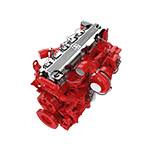Nov . 08, 2024 19:37 Back to list
rear brake drum adjustment
Understanding Rear Brake Drum Adjustment A Comprehensive Guide
Rear brake drum adjustment is a crucial aspect of maintaining the safety and efficiency of your vehicle’s braking system. Understanding how this process works ensures that your brakes perform optimally and can extend the life of your braking components. This article will guide you through the importance of rear brake drum adjustment, the steps involved in the process, and some tips for effective maintenance.
Importance of Proper Adjustment
Brake drums operate in a closed system where friction between the brake shoes and the inner surface of the drum slows down the vehicle. Over time, the shoes can wear down, and the spacing between them and the drum can increase, leading to reduced braking efficiency. If the brakes are not adjusted properly, it can result in
1. Increased Stopping Distance If the brakes are not engaging effectively, it will take longer to stop the vehicle, which can increase the risk of accidents.
2. Uneven Wear Improperly adjusted brakes can cause uneven wear on the brake shoes and drum, leading to premature failure and the need for costly replacements.
3. Brake Fade When brakes overheat due to excessive distance or poor adjustment, they can lose their effectiveness, leading to potential danger while driving.
4. Reduced Fuel Efficiency Brakes that are continually in contact due to poor adjustment can cause drag, which affects the vehicle's overall fuel efficiency.
The Adjustment Process
Adjusting rear brake drums can vary slightly depending on the make and model of your vehicle, but generally follows these basic steps
1. Gather Necessary Tools You will need a jack, jack stands, a brake adjuster tool, and possibly a wrench set depending on your vehicle’s configuration.
2. Loosen the Wheel Lug Nuts Before lifting the vehicle, slightly loosen the lug nuts on the rear wheels using a wrench.
3. Lift the Vehicle Carefully jack up the rear of the vehicle and secure it with jack stands. Ensure it is stable before proceeding.
4. Remove the Wheels Take off the rear wheels to access the brake drum.
rear brake drum adjustment

5. Inspect the Brake Assembly Before making adjustments, inspect the brake shoes and drum for wear. If the shoes are worn beyond the manufacturer’s specifications, they will need to be replaced.
6. Locate the Adjuster Depending on your brake configuration (manual or self-adjusting), locate the brake adjuster mechanism. For manual adjusters, you may find an access hole on the backing plate.
7. Adjust the Brake Shoes Using a brake adjuster tool, turn the adjuster gear to expand or contract the brake shoes. You want the shoes to just barely touch the drum when it spins. This slight friction ensures effective engagement without dragging.
8. Check the Drum Rotate the drum as you adjust to ensure there are no tight spots or excessive drag. You should be able to turn the drum freely with a small amount of resistance.
9. Reassemble Once the adjustment is complete and the shoes are properly positioned, reattach the wheels and tighten the lug nuts in a star pattern to ensure even pressure.
10. Lower the Vehicle Remove the jack stands and lower the vehicle back to the ground.
11. Test Drive Finally, take your vehicle for a test drive to ensure the brakes engage properly and feel responsive. Listen for any unusual noises that might indicate issues.
Maintenance Tips
1. Regular Checks Incorporate brake inspections into your regular vehicle maintenance regimen. This will help identify wear early on.
2. Skim the Drum If the brake drum is out of round or unevenly worn, consider having it professionally skimmed to achieve a smooth surface for optimal contact.
3. Keep it Clean Ensure that the brake assembly remains free from oil, grease, and debris, which can impact braking performance.
4. Replace Components as Needed Don’t hesitate to replace worn-out brake shoes or drums to prevent further issues.
In conclusion, rear brake drum adjustment is vital for ensuring safe and efficient vehicle operation. By understanding the adjustment process and conducting regular maintenance, you can keep your vehicle’s braking system in top shape, enhancing safety for you and others on the road. Always refer to your vehicle’s owner's manual for specific guidelines and recommendations related to your model.
-
Your Brake Drum Man: Premium & Reliable Brake Drums for Sale
NewsAug.18,2025
-
ROR Web Development: Build Fast, Scalable, Secure Apps
NewsAug.17,2025
-
Scania Brake Drums: OEM Quality for Optimal Safety & Durability
NewsAug.16,2025
-
R.V.I: Advanced Remote Visual Inspection for Precision
NewsAug.15,2025
-
Discover HYUNDA: Innovative Vehicles, Equipment & Solutions
NewsAug.14,2025
-
R.V.I: Unlock Advanced Insights & Real-time Performance
NewsAug.13,2025
